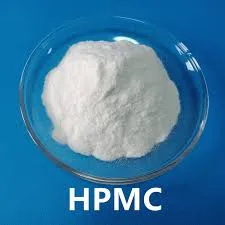
កញ្ញា . 06, 2024 23:25 Back to list
Redispersible Polymer Powder Types - Comprehensive Guide
Exploring the Types of Redispersible Polymer Powder
Redispersible polymer powders (RDPs) are a key component in the construction and building materials industry, offering improved properties for a wide range of applications. These fine powders are obtained from aqueous dispersions of polymers through drying processes. Once mixed with water, they can be re-dispersed to form a stable polymer film, enhancing the properties of various formulations. This article delves into the different types of redispersible polymer powders and their applications.
1. Ethylene Vinyl Acetate (EVA) Copolymers
EVA copolymers are among the most widely used RDPs in construction. They offer excellent adhesion to different substrates and enhance flexibility and impact resistance in cement-based formulations. EVA-based polymer powders are often utilized in tile adhesives, repair mortars, and self-leveling compounds. Their ability to improve workability and water resistance makes them a popular choice in the industry.
2. Styrene Butadiene (SB) Copolymers
Styrene butadiene copolymers provide remarkable mechanical properties and adhesion strength. When added to cement mortars, they enhance the overall durability and waterproofing capacity of the mixture. SB copolymers are commonly used in floor adhesives, wall adhesives, and for exterior wall finishing applications. Their performance in varying temperatures and humidity levels makes them suitable for both interior and exterior uses.
redispersible polymer powder types

Polyvinyl acetate is another type of redispersible polymer powder that boasts excellent adhesive properties. Although it is less flexible compared to EVA and SB copolymers, it provides a good balance of strength and flexibility for various applications. PVAc is frequently used in wood adhesives, paper products, and in some construction applications where high adhesion to porous substrates is required.
4. Acrylic Polymers
Acrylic redispersible polymer powders are praised for their UV stability, weather resistance, and exceptional tensile strength. They are highly versatile and are employed in various formulations like exterior insulation and finish systems (EIFS), decorative coatings, and waterproofing applications. Their ability to maintain performance over time makes them ideal for outdoor applications.
5. Vinyl Acetate Versus Ethylene (VAE) Copolymers
VAE copolymers are noteworthy for providing improved moisture resistance and adhesion strength. They often find applications in tile adhesives, skim coats, and as binders in various coatings. Their zero to low VOC (volatile organic compound) emissions make them an environmentally friendly option, appealing to sustainable building practices.
Conclusion
Redispersible polymer powders are invaluable in modern construction, offering various benefits based on their unique properties. From EVA and SB copolymers to PVAc, acrylics, and VAE copolymers, each type caters to specific application needs, enhancing durability, flexibility, and adhesion. As the construction industry continues to evolve, the role of RDPs in creating high-performance materials will undoubtedly expand, driving innovation and sustainability in building practices. Understanding these different types will help manufacturers and contractors select the most suitable products for their specific applications, leading to better performance and longevity in construction projects.
-
The Widespread Application of Redispersible Powder in Construction and Building Materials
NewsMay.16,2025
-
The Widespread Application of Hpmc in the Detergent Industry
NewsMay.16,2025
-
The Main Applications of Hydroxyethyl Cellulose in Paints and Coatings
NewsMay.16,2025
-
Mortar Bonding Agent: the Key to Enhancing the Adhesion Between New and Old Mortar Layers and Between Mortar and Different Substrates
NewsMay.16,2025
-
HPMC: Application as a thickener and excipient
NewsMay.16,2025
-
Hec Cellulose Cellulose: Multi functional dispersants and high-efficiency thickeners
NewsMay.16,2025







